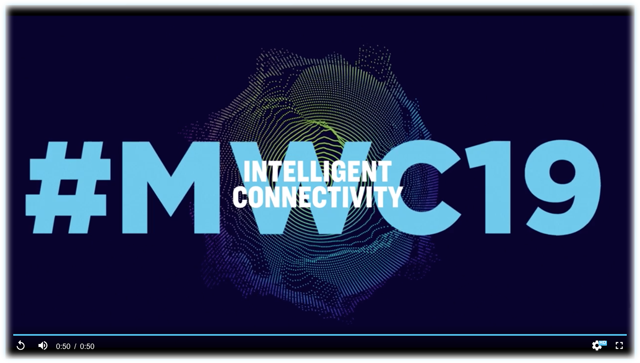Frank Marshall has hope for the future of filmmaking: ‘It’s just gonna look different’ https://t.co/wt4Ckl3qoX
— Kevin Clark (@Homageusa) May 24, 2020
Last year we had the opportunity to produce several activities inside of the Mobile World Congress 2019 in Los Angeles “When Worlds Collide” , and YOMO. In this post, We’ll examine the ethos of the creative-tech corridors, “collaboration” as the way-ahead post COVID 19. This blog will look forward to provide an overview of some of the latest entertainment announcements and how 5G networks and AI are going to be used in order to generate post COVID-19 recovery and a look at the future classroom at the earliest possible age.
MWC19 LA Keynote 1: Mayor of Los Angeles – Mobile World Live https://t.co/mJ2qICh7CD
— Kevin Clark (@Homageusa) October 28, 2019
Met some great people this year @ MWC LA 2019, I’m already planning for MWC LA 2020 in a big way…Stay tuned pic.twitter.com/WRx1lgqibH
— Kevin Clark (@Homageusa) October 27, 2019
One of the most important announcements made by NVIDIA at the Mobile World Congress is EGX (Edge Computing Platform). EGX is a high-performance, cloud-native platform designed to let companies rapidly stream data from remote locations at low latency. Many companies have already decided to make use of this platform, some examples are: Walmart, Samsung and BMW.
“We’ve entered a new era, where billions of always-on IoT sensors will be connected by 5G and processed by AI”
EGX was made possible thanks to the combination of three main technologies: Artificial Intelligence, the Internet of Things and 5G.
Verizon 5G Labs Built on 5G Challenge represents at the Verizon booth on the MWC show floor #BuiltOn5G #MWC19 pic.twitter.com/6N3WDAiOKj
— Digital LA (@DigitalLA) October 23, 2019
Internet of Things: Smart devices are nowadays becoming more and more common. IoT is commonly used by industries to harness data remotely and make smart decisions using the gathered information. One of the main problems of using IoT devices in industrial applications has always been the need to fast capture, process and transmit data in real-time. If any of these 3 requirements can’t be met, then our IoT devices would not be able to quickly respond to changes in the environment and report anomalies back to the Cloud. If you are interested in finding out more in details about how IoT devices works, additional information are available here.
Artificial Intelligence: AI is used in IoT devices to process the gathered data. The captured data can be of many different forms depending on the applications. Some examples are: time series data, camera recording and anomaly detection. In IoT applications, it then becomes really important to make the best use of memory and processing power needed to run our AI models. Therefore, depending on the application, it can be possible to perform our AI data processing either locally (if there are privacy-related concerns) or on the Cloud (enabling us to make use of more advanced AI models).
Finally, 5G can now enable us to consistently speed up the communication between our IoT devices and the Cloud. This can, therefore, enable us to run more sophisticated applications on the Cloud such as online gaming and Augmented/Virtual reality powered applications. Virtual Reality Data Visualization is a really important step to perform when analyzing vast amounts of data. Some of the main benefits of performing data visualization are: It can help us to gain a deep understanding of the dynamics underlying our data distribution. Having a deep understanding of our data can help us building better Machine Learning models. Creating charts summaries can make easier for others to understand our data investigation.
Thank you to all our #IoT partners and attendees. See you next year! #LPWA #LTEM #NBIoT pic.twitter.com/1bBq8Qxly7
— GSMA Events (@GSMAEvents) October 24, 2019
At the mobile world congress, different companies launched Virtual Reality (VR) powered Data Visualization tools (eg. Virtualitics and BadVR). In fact, thanks to 5G, it will now be easier to even live stream heavy data VR applications.
Virtual Reality creates a completely artificial environment in which the user gets fully immersed. Using VR to visualize datasets could potentially lead to enhanced customer experience and a better understanding of dataset features (especially for medical applications such as protein folding). In particular, Virtualitics can also be integrated with Jupyter Notebooks using their Python API (as shown in the video below), making possible for everyone to create AR Data Visualization charts.


